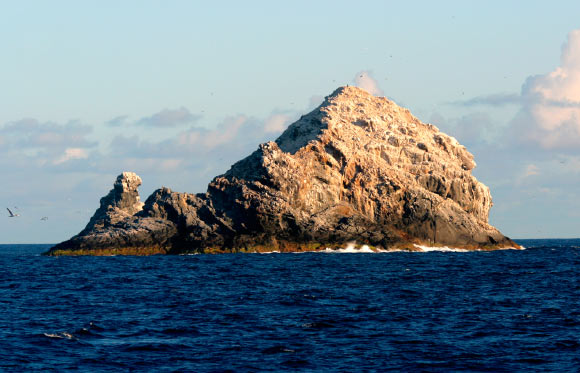Pūhāhonu (‘turtle rising for breath’ in Hawaiian), a 13-million-year-old volcano in the northwest Hawaiian Ridge, is twice the size of Mauna Loa volcano, which was assumed to be not only the largest Hawaiian volcano but also Earth’s largest known shield volcano, according to new research from the University of Hawai’i at Mānoa.
Scientists and the public have long thought Mauna Loa, a culturally-significant and active shield volcano on the Big Island of Hawai’i, was the largest volcano in the world.
“It has been proposed that hotspots that produce volcano chains like Hawai’i undergo progressive cooling over 1-2 million years and then die,” said lead author Professor Michael Garcia, a researcher in the Department of Earth Sciences at the University of Hawai’i at Mānoa.
“However, we have learned from this study that hotspots can undergo pulses of melt production.”
“A small pulse created the Midway cluster of now extinct volcanoes and another, much bigger one created Pūhāhonu. This will rewrite the textbooks on how mantle plumes work.”
In 1974, Pūhāhonu, then called Gardner Pinnacles, was suspected as the largest Hawaiian volcano based on very limited survey data.
Subsequent studies of the Hawaiian Islands concluded that Mauna Loa was the largest volcano, but they included the base of the volcano that is below sea level that was not considered in the 1974 study.
The new bathymetric and gravity mapping, volume calculations and chemical analyses of rocks show that Pūhāhonu is the largest.
“We are sharing with the science community and the public that we should be calling this volcano by the name the Hawaiians have given to it, rather than the western name for the two rocky small islands that are the only above sea level remnants of this once majestic volcano,” Professor Garcia said.
“Our study highlights Hawaiian volcanoes, not only now but for millions of years, have been erupting some of the hottest magma on Earth,” the researchers said.
“The work also draws attention to an infrequently visited part of the state of Hawai’i that has ecological, historical and cultural importance.”
The team’s paper was published in the journal Earth and Planetary Science Letters.
_____
Michael O. Garcia et al. 2020. Pūhāhonu: Earth’s biggest and hottest shield volcano. Earth and Planetary Science Letters 542: 116296; doi: 10.1016/j.epsl.2020.116296








